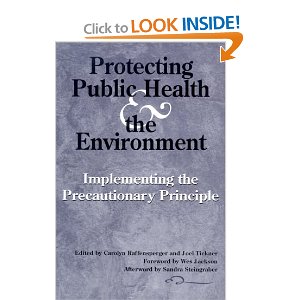
4.0 out of 5 stars On Target but Fragmented–Needs New Edition with Summary
June 2, 2001
Carolyn Raffensperger (Editor), Joel Tickner (Editor), Wes Jackson (Foreword)
This is the second best of several books on environmental policy I have reviewed, and it merits careful scrutiny in part because it brings together a number of expert authors and there is in essence “something for everyone” in this edited work. What is lacks, though, is a good summary chapter that lists how the “precautionary principle” should be applied across each of the top ten environmental areas of concern–something that could circulate more easily than the book, and perhaps have a beneficial policy impact at the local, state, and national levels–and I suggest this because the meat of the book is good, it needs an executive summary.
The chapter that was most meaningful to me, the one that I think needs to be migrated into business education, international affairs education, science & technology policy education, is by Gordon K. Durnil, Chapter 16, and it deal with “How Much Information Do We Need Before Exercising Precaution.” This is a brilliant piece of work that dissects our current environmental policy information collection, processing, and analysis system, and finds it very deceptive, disingenuous, and consequently seriously flawed.
For the best on the environment, read Pandora's Poison. For the best on public health, read Betrayal of Trust. For a very fine cross-over book that has good chapters from various good people, this is the book to buy and enjoy.




